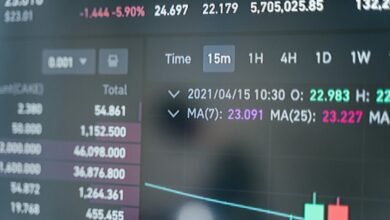Crypto30x.com Regulation: Understanding the Regulatory Environment for High-Leverage Crypto Trading

The regulatory landscape for high-leverage crypto trading, particularly at platforms like Crypto30x.com, is intricate and evolving. As global authorities tighten their grip, traders face an array of compliance challenges. Understanding these regulations is crucial, as failure to adhere can lead to significant financial repercussions. Moreover, the implications of these rules extend beyond mere compliance; they inform risk management strategies that traders must adopt. What strategies might emerge as essential in this shifting terrain?
Overview of High-Leverage Trading in Cryptocurrency
What factors contribute to the allure of high-leverage trading in cryptocurrency markets? Many traders are drawn to the potential for substantial returns, as high-risk strategies enable them to amplify their positions beyond their capital.
However, this approach necessitates strict margin requirements, demanding careful risk management. The prospect of quick profits often overshadows the inherent dangers, attracting those seeking financial autonomy in volatile environments.
Regulatory Frameworks Across Different Jurisdictions
High-leverage trading in cryptocurrency markets has intensified the need for robust regulatory frameworks, as the potential for significant gains is accompanied by heightened risks that can impact both individual traders and the broader financial ecosystem.
Global regulations vary significantly across jurisdictions, with some regions embracing stringent oversight while others adopt a more laissez-faire approach. This reflects diverse attitudes toward risk and innovation in the cryptocurrency landscape.
Recent Developments in Crypto Trading Regulations
As regulatory bodies worldwide respond to the rapid evolution of cryptocurrency markets, recent developments have underscored a growing consensus on the necessity of comprehensive oversight.
Regulatory updates emphasize the importance of crypto compliance, with many jurisdictions implementing stricter guidelines for high-leverage trading.
These changes aim to protect investors while balancing the need for innovation, reflecting an adaptive approach to a dynamic financial landscape.
Implications for Traders and Best Practices
Given the evolving regulatory landscape, traders must navigate an increasingly complex environment that emphasizes compliance and risk management.
This necessitates a robust focus on trader education, ensuring individuals understand both the mechanics of high-leverage trading and the regulatory implications.
Conclusion
In the tumultuous realm of high-leverage crypto trading, navigating regulatory landscapes can feel like traversing a minefield blindfolded. As authorities tighten their grip, traders must become virtuosos of compliance and risk management, lest they find themselves ensnared in legal quagmires. The stakes are astronomically high—failure to adapt could lead to catastrophic losses or worse. Thus, understanding regulations and employing rigorous risk strategies are not just prudent; they are the difference between trading triumph and financial obliteration.





